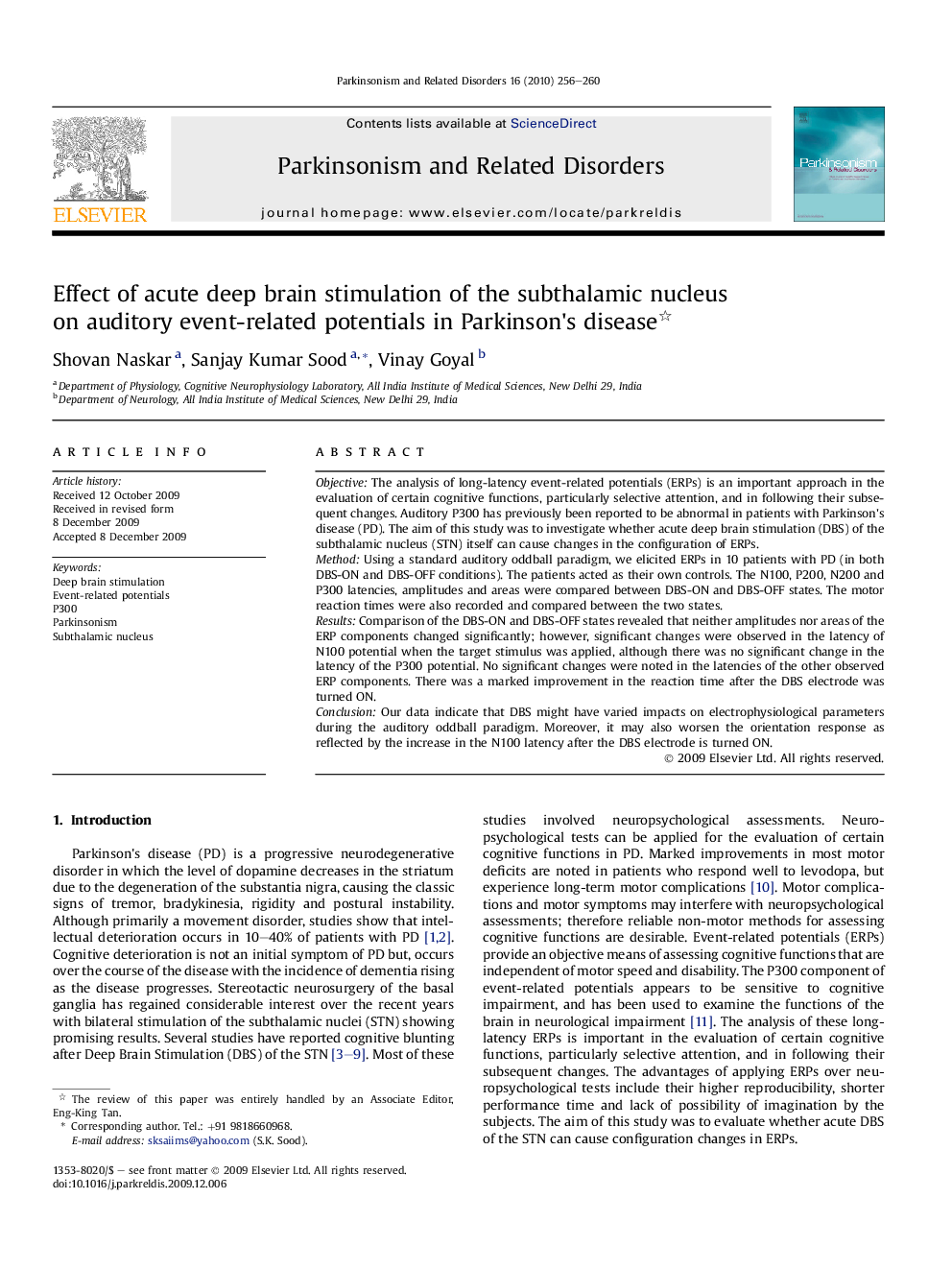| Article ID | Journal | Published Year | Pages | File Type |
|---|---|---|---|---|
| 1921351 | Parkinsonism & Related Disorders | 2010 | 5 Pages |
ObjectiveThe analysis of long-latency event-related potentials (ERPs) is an important approach in the evaluation of certain cognitive functions, particularly selective attention, and in following their subsequent changes. Auditory P300 has previously been reported to be abnormal in patients with Parkinson's disease (PD). The aim of this study was to investigate whether acute deep brain stimulation (DBS) of the subthalamic nucleus (STN) itself can cause changes in the configuration of ERPs.MethodUsing a standard auditory oddball paradigm, we elicited ERPs in 10 patients with PD (in both DBS-ON and DBS-OFF conditions). The patients acted as their own controls. The N100, P200, N200 and P300 latencies, amplitudes and areas were compared between DBS-ON and DBS-OFF states. The motor reaction times were also recorded and compared between the two states.ResultsComparison of the DBS-ON and DBS-OFF states revealed that neither amplitudes nor areas of the ERP components changed significantly; however, significant changes were observed in the latency of N100 potential when the target stimulus was applied, although there was no significant change in the latency of the P300 potential. No significant changes were noted in the latencies of the other observed ERP components. There was a marked improvement in the reaction time after the DBS electrode was turned ON.ConclusionOur data indicate that DBS might have varied impacts on electrophysiological parameters during the auditory oddball paradigm. Moreover, it may also worsen the orientation response as reflected by the increase in the N100 latency after the DBS electrode is turned ON.
